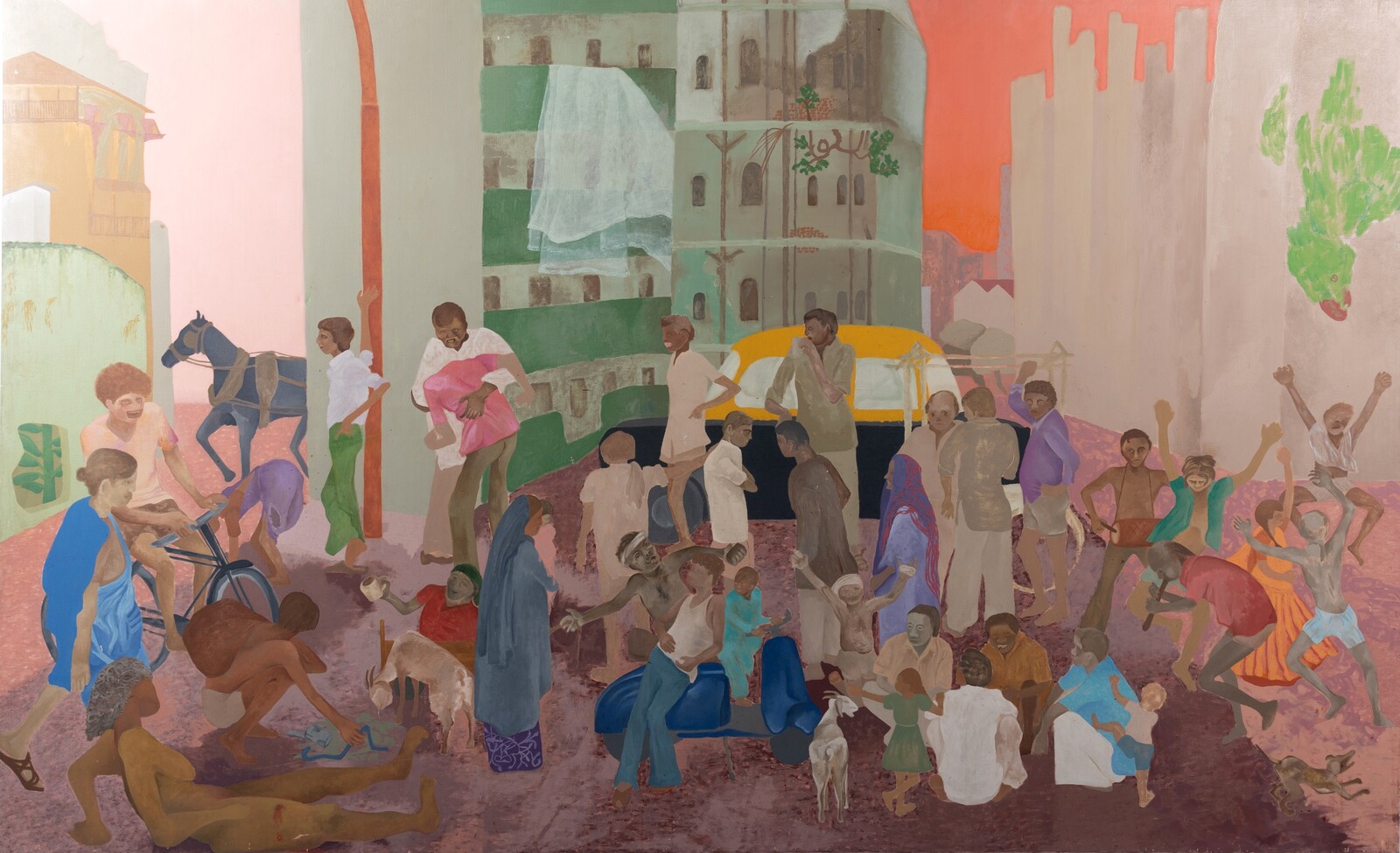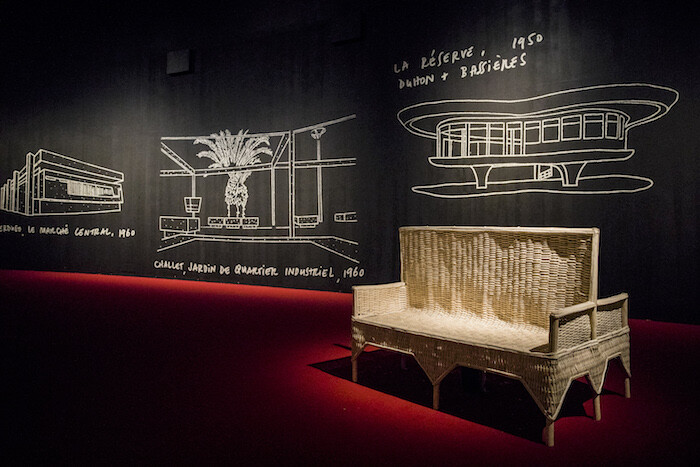Categories
Subjects
Authors
Artists
Venues
Locations
Calendar
Filter
Done
March 14, 2025 – Review
Noah Davis
Novuyo Moyo

This retrospective cements Noah Davis’s legacy as a multifaceted artist whose influence is only beginning to be felt and understood. Curated chronologically, it breaks the sections up in themes relevant to his practice and short life—Davis died in 2015, aged just 33—and gives a central place to The Underground Museum that he founded with his wife, the artist Karon Davis, in 2013. A cultural nerve center for the Los Angeles neighborhood of Arlington Heights, the community museum promoted access to art for all and, until its closure in 2022, extended the key concern with locality and social fabric that is essential to understanding Davis’s work.
That enthusiasm for and engagement with community is most obviously evident in Davis’s best-known paintings, which feature regular people, going about their lives, doing seemingly mundane things. He’d sometimes paint from memory, and at other times used photographs as reference material: his series “1975” was based on photos his mom took as a high school senior in Chicago. These paintings, at once intimate yet slightly detached, capture snapshots of ordinary lives and monumentalize them in his signature dry style. When not drawing directly from the quotidian, Davis turned to mythology and the imagination, and so …
December 23, 2024 – Review
“The Imaginary Institution of India: Art 1975–1998”
Serubiri Moses

Sheba Chhachhi’s photographs, taken on the frontline of the Indian women’s movement—crisp black-and-white images of working-class women at a demonstration, performing in a play about gender-based violence, and in their own homes—encapsulate this watershed exhibition well. “The Imaginary Institution of India”—which includes over 150 works of painting, sculpture, photography, and other media, sprawling over two floors and thirteen sections—is a show about class and its tensions, playing out violently in the world’s largest democracy. Curator Shanay Jhaveri’s thesis, though, rests on the formal and aesthetic shifts as shaped by the politics of this time period (1975–98). For Jhaveri, developments in landscape painting, for example, illustrate the ways in which class tensions came to a head after the declaration of Emergency in 1975.
Writing in March 1987, artist Anita Dube asked whether the incumbent Indian nationalist and mainstream political discourse could view the lower caste person and petit bourgeois artist as a “species being who creates history.” “A sleepless wind is raising a sleepless song in sleepless heads in sleepless nights,” wrote Dube at the end of her text. Reading it, I paused on every sleepless, and again at sleepless nights. If sleepless nights paint a picture of …
May 18, 2018 – Review
Yto Barrada’s "Agadir"
Mitch Speed

Just before midnight on February 29, 1960, an earthquake hit the Moroccan city of Agadir, killing between 12,000 and 15,000 people—roughly a third of the city’s population. As many were injured; at least 35,000 were left homeless. Yto Barrada’s “Agadir,” in The Curve gallery at London’s Barbican Centre, invokes the disaster in oblique and poetic ways across drawings, audio recordings, collage, and film. Despite the breadth of media employed, this is a show that lacks the depth of historical context one might expect from such a weighty subject, compelling viewers to keep reading, watching, and learning after they’ve left the exhibition, in order to fill in the gaps.
Entering the dim gallery was exciting. Its dark lighting and dramatic colors—the long curving wall painted black, the carpet beneath it blood red—recalled the set of a camp Italian horror film. (The cinematic influence is in keeping with the artist’s broader practice: in 2006, Barrada founded the Cinémathèque de Tanger, an independent project that, operating from Tangier’s Cinema Rif, is dedicated to the local and international promotion of independent Moroccan film.) On the Barbican’s curving wall are sixteen large drawings, “Untitled (Agadir)” (2018), executed by scratching broad white lines from the black paint. …